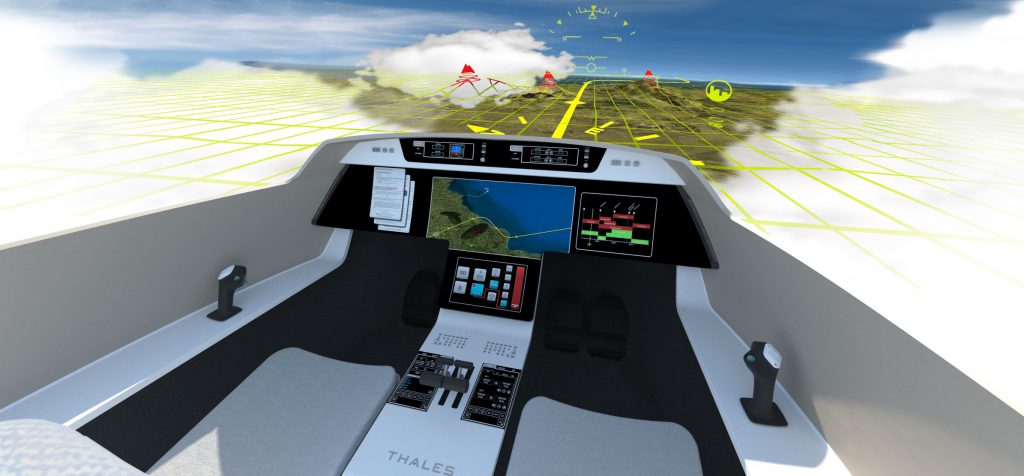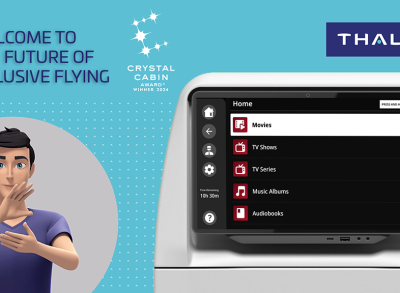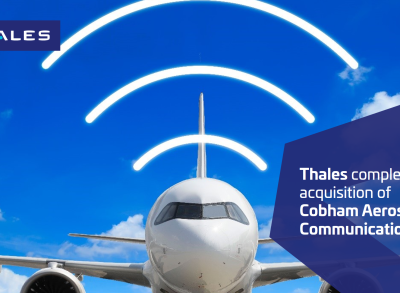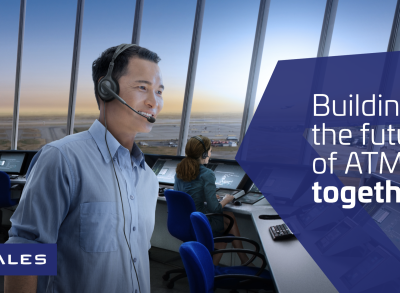Thales, designing the future of aviation

Why choose 2040 as our virtual destination?
Vincent Megaïdes: Passenger traffic and airline fleets will have doubled by then, there will be urban air taxis everywhere, and we will have experienced the first flights of entirely autonomous passenger aircraft. 2040 is not far off from an industry standpoint and at Thales we are structuring and nurturing new digital skills and services, so that we are not only a player in future aviation but are among its main architects!
What are the factors that are triggering and driving the changes you expect to see?
Vincent Megaïdes: Air travel will continue becoming more democratic and affordable. With the introduction of autonomous flying craft for urban and suburban trips, we are also looking at a major challenge in terms of air traffic management and aviation regulation requirements. This will all go hand-in-hand with lower production costs and the rise of new technologies used for autonomous flights, as well as the development of new business models, mainly based on services.
Thales is both aligned with those future changes and remains at the forefront of what is being achieved: for instance, we are looking to ensure that even while air traffic volumes go up, the environmental footprint of aircraft remains as low as possible and that optimum levels of safety are maintained. As such we are working hard on embedding artificial intelligence into our cockpit solutions, which in turn will lay strong foundations for a shift towards single pilot operations and autonomous aircraft.
How will passengers be affected?
André Cléroux: Onboard passenger systems will provide an enhanced means of enabling passengers to enjoy their own personal daily environment in the air. At Thales we’re now dreaming up the future interfaces, hardware and software to take things to a whole new dimension, and that will have further added value for passengers and generate additional revenues for airlines. By combining our knowledge in that area with key subjects – air/ground connectivity, cybersecurity to make sure all data stays safe, and improving the overall flow by securing airports and aircraft – all of this will add up to seamless connectivity for passengers.
What does all this imply for the actual aircraft?
André Cléroux: One of the key vectors for change will be the intensive use of electrical propulsion systems (or maybe hybrid systems on long-range aircraft) and energy storage systems. These new means of propulsion, coupled with new aerodynamic designs such as blended wing/body aircraft, are currently being worked on by airframers. Ultimately, these developments will combine to further enhance the green, eco-friendly credentials of aircraft.
Passenger air travel will also evolve with the arrival (or return!) of supersonic/hypersonic aircraft, set to be developed in the 2030s and introduced in the 2040s. But it may be that these will be limited to wealthy passengers.
How will flight at large evolve between now and 2040?
Vincent Megaïdes: It is likely that, come 2040, an aircraft cockpit will not look much like today’s cockpits! Aircraft will be autonomous (or almost totally autonomous) so the pilot’s role will have fundamentally changed – their job will simply be to oversee the system and, on some flights, there will no longer be a pilot! And, thanks to permanent secure high-bandwidth connectivity, a number of functions which are currently handled on board will be transferred to the ground.
Again, these are areas that we are already working on. By developing solutions including distributed avionics, user-friendly connected aircraft operations management devices, crew monitoring and optimized trajectory management, we have made massive progress in making the pilot’s role simper and safer. The knock-on effect is that this all facilitates aircraft turnaround and the economics of flying, and provides an effective response to the increase in affordable air travel.
André Cléroux: As far as air traffic management is concerned, systems will be entirely automated, taking a number of factors (such as weather, levels of traffic) into account, and there will be a shift away from traditional flight paths / levels to a real-time trajectory-based approach, an area in which Thales is leading the way.
There will also be a clear merger between cockpit piloting activities and air traffic control, using systems that will permanently dialogue with each other. This all draws on the four digital pillars which are Thales’s key areas for development: connectivity, cybersecurity, Artificial Intelligence and big data, all of which are being fed into the solutions we provide across the entire spectrum of air travel, from cockpit and cabin systems to air traffic management systems.
This interview has been adapted from a talk given by Vincent Megaïdes and André Cléroux at the 2018 Vivatech show in Paris. Watch the full talk here.




